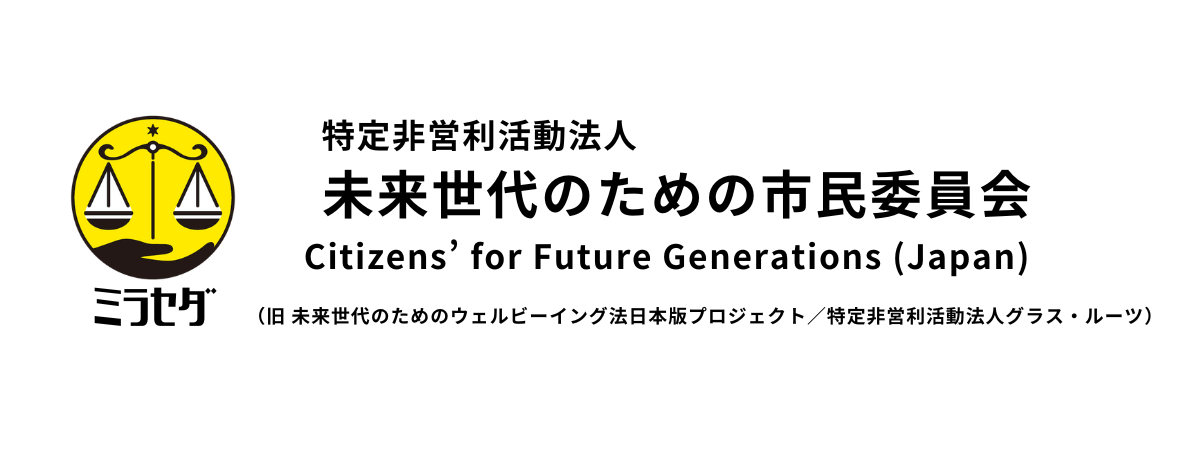The global footprint of Wales
What is the Indicator?
Our global footprint is the total environmental burden that society places on the planet. Globally, we are consuming more natural resources than the world is able to replace.
One way of measuring our global footprint and this ecological deficit is to calculate what is known as an Ecological Footprint, which represents the area of land needed to provide raw materials, energy and food as well as absorb pollution and waste created. It is measured in global hectares.
Our global footprint is influenced by the food people eat, the way they travel and the energy they use at home. It also accounts for the purchase of products and services from insurance to televisions to items of clothing. It also includes impacts from construction activity and investment in infrastructure.
この指標について
私たちのグローバルフットプリントは、社会が地球に与える環境負荷の総計です。世界的に見て、私たちは地球が再生できる以上の天然資源を消費しています。
私たちのグローバルフットプリントとこの生態学的赤字を測定する方法の一つは、「エコロジカルフットプリント」として知られるものを計算することです。これは、原材料、エネルギー、食料を提供し、汚染と廃棄物を吸収するために必要な土地の面積を表しています。これはグローバルヘクタールで測定されます。
私たちのグローバルフットプリントは、人々が食べる食品、移動手段、自宅で使用するエネルギーに影響されます。また、保険からテレビ、衣服の購入、建設活動やインフラへの投資までの製品やサービスの購入も考慮されます。
What is the milestone?
Wales will use only its fair share of the world’s resources by 2050.
マイルストーンは何ですか?
ウェールズは2050年までに世界の資源の公平なシェアのみを使用します。
Global (or ecological) footprint of Wales in 2018 (Mgha): 12.3
2018年のウェールズのグローバル(または生態学的)フットプリント(Mgha):12.3
What does the data say?
A global footprint for Wales has recently been calculated by JNCC using the Ecological Footprint methodology. This is part of a wider project to improve understanding of the global environmental footprint and impacts of commodities that are consumed within Wales, but that may be produced anywhere in the world.
Using the Ecological Footprint methodology, Wales’s global footprint has generally decreased from around 17.0 million global hectares (gha) in 2004 to 12.3 million gha in 2018. The global footprint per person has reduced by nearly a third over the time period, and stood at 3.9 gha per person in 2018. However, this remains over twice the estimated biocapacity of Wales. In other words, if the entire world population lived like the citizens of Wales, humanity would require 2.08 Earths.
データは何を示していますか?
ウェールズのグローバルフットプリントは最近、JNCCによってエコロジカルフットプリントの方法論を用いて計算されました。これは、ウェールズ内で消費されるが、世界のどこで生産されるかにかかわらず、商品のグローバルな環境フットプリントと影響を理解するための広範なプロジェクトの一環です。
エコロジカルフットプリントの方法論を使用して、ウェールズのグローバルフットプリントは2004年の約1700万グローバルヘクタール(gha)から2018年には1230万ghaに一般的に減少しました。1人当たりのグローバルフットプリントは、この期間に約3分の1減少し、2018年には1人当たり3.9ghaでした。しかし、これはウェールズの推定生物容量の2倍以上に相当します。つまり、世界全体の人口がウェールズの市民のように生活した場合、人類は地球が2.08個必要になります。
Figure 1: Global footprint (gha) per person, 2004 to 2018
2004年から2018年の1人当たりのグローバルフットプリント(gha)

Graph description: Global footprint (gha) per person increased slightly from 2004 to a peak in 2007 and decreased between 2007 to 2018.
Source: Understanding the Global Environmental Footprint and Impacts of Welsh Consumption, JNCC
グラフの説明:1人当たりのグローバルフットプリント(gha)は、2004年から2007年のピークにかけてわずかに増加し、2007年から2018年にかけて減少しました。
出典:ウェールズの消費に関するグローバル環境フットプリントと影響の理解、JNCC
Related information
An Ecological Footprint was produced using two slightly different methodologies – one making use of Wales specific data (only available for 2019), and the other using different and slightly simpler input data (apportioning UK data to Wales) to enable the production of a time series. Due to its ability to monitor change over time, the latter is being used to report progress against the national indicator and milestone.
In addition to the Ecological Footprint, JNCC in collaboration with the Global Footprint Network and the Stockholm Environment Institute have also produced further analysis in the following areas to help to better understand the pressures and impacts at play and importantly help to inform appropriate policy and societal responses:
- The waste component of the Welsh Ecological Footprint which assesses the proportion of the overall footprint associated with waste – measuring the resources that enter the economy and are ultimately turned into waste in order to help quantify resource efficiency.
- A Welsh Material Footprint which is an estimate of the total tonnes of material extracted or produced to support consumption. This includes material discarded at previous stages in the supply chain.
- A Welsh Version of the Global Environmental Impacts of Consumption indicator which is a set of estimates of the biodiversity loss, deforestation and water impacts associated with consumption. It breaks down each impact by commodity type and location.
関連情報
エコロジカルフットプリントは、2つの異なる方法論を使用して作成されました。1つはウェールズ固有のデータを使用(2019年のみ利用可能)、もう1つは異なるがやや単純な入力データ(英国データをウェールズに割り当て)を使用して、時系列の作成を可能にしました。変化を長期的に監視できるため、後者が国の指標と目標に対する進捗を報告するために使用されています。
エコロジカルフットプリントに加えて、JNCCはグローバルフットプリントネットワークおよびストックホルム環境研究所と協力して、次の分野でさらに分析を行い、圧力や影響をよりよく理解し、適切な政策および社会的対応を知らせるための重要な情報を提供しています:
- ウェールズのエコロジカルフットプリントの廃棄物成分:経済に入って最終的に廃棄物になる資源の割合を評価し、資源効率を定量化するのに役立てます。
- ウェールズの物質フットプリント:消費を支えるために抽出または生産された総トン数の推定値です。これには、サプライチェーンの以前の段階で廃棄された材料が含まれます。
- ウェールズ版のグローバル環境消費指標:消費に関連する生物多様性の損失、森林伐採および水影響の推定値のセットです。各影響を商品タイプおよび場所ごとに分解します。
Contact email: stats.environment@gov.wales
Last update: September 2023
Designation:The source of this indicator is not published as an official statistic
External links:
- Link to data and report: Understanding the Global Environmental Footprint and Impacts of Welsh Consumption | JNCC Resource Hub
連絡先メール: stats.environment@gov.wales
最終更新日: 2023年9月
出典: この指標の出典は公式統計として公開されていません
外部リンク
データおよびレポートへのリンク:ウェールズの消費に関するグローバル環境フットプリントと影響の理解 | JNCCリソースハブ
元リンク先:
https://www.gov.wales/wellbeing-wales-national-indicators
.













